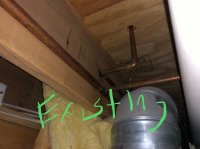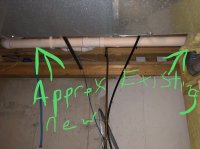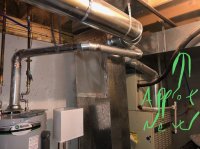groundedchevy
New Member
This weekend i'm I'm going to be ripping out our master bathroom shower and the wall that has the shower plumbing. The plumbing will be moved to the opposite wall. The current setup has a 3/4" cold water line with a tee going to 1/2" up to the valve and a 1/2" hot water line going up to the valve (I am unable to see the 3/4" hand off. As you can see from the pictures the hot water tank is very close the new and old plumbing. Would you recommend running 3/4" from the hot water tank and changing it to 1/2" right under the valve? I'm planning to install a Delta R22000 valve. I will have a shower head and a handheld that I would like to be able to power at the same time. I thought running the 3/4" from the hot water tank would make sure I have significant pressure to both shower heads.




